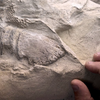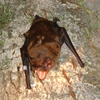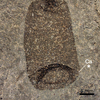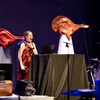Planting Seeds on the Moon!

Above: A photography from the study showing the sprouted plants in moon soil.
In an incredible advancement in the field of astrobotany (one of the most excitingly named fields of science), plants have been successfully grown in soil collected from the moon's surface. Scientists from the University of Florida used lunar regolith soil for their experiment and found that every single seed germinated.
The soil samples originally came from the Apollo 11, 12, and 17 missions and as a control group another group was planted in a batch of terrestrial soil designed to replicate lunar material (JSC-1A). These soil samples were all collected in basaltic regions and some contained trapped gasses and glass fragments formed by meteorite impacts. This would mean the soil was quite different from something you might scoop in your backyard.
Only a few days after planting, scientists found that every pot had been successfully germinated in the moon soil. The planet, Arabidopsis thaliana, was chosen as a model organism and after 20 days each specimen was removed for testing. Though they'd sprouted as expected, the experiment was not without problems. The growth of the lunar soil plants was slow going and showed signs of stress. These reactions were similar to plants exposed to salts or metals. This means that while it was certainly possible to grow life in lunar soil, it wouldn't happen easily.
This study will have an incredible impact on the future of extraterrestrial habitation. Now that it has been shown that propagation of terrestrial plants is possible in extraterrestrial soil, the next step is figuring out how to counter the problems of growth and stress the plants faced in the soil. Perhaps some day the experiment will even advance to growing plants on the moon itself!
The full study is available in Nature.
Interested in learning more about astrobotany and moon plants? Check out the Apollo 14 Moon Tree experiment specimen here!
Featured Product
Joe Frazier Boxing Glove
Cool Things!

Is “Paul is Dead” Dead?: Unpacking One Of Pop Culture’s Most Enduring Conspiracy Theories

Scientists Discover Hooves and Skin in Preserved Dinosaur "Mummies!"
A dinosaur discovery just in time for Halloween! In a new analysis of a group of fossils from Wyoming, Scientists have determined this group of fossils are dinosaur “mummies,” with preserved skin and even hooves.

Scientists Record a Bat Catching Birds Mid-Flight!
Bats, birds, screeches, oh my! In a reverse-Hitchcock twist, a new study reveals that a species of European bat catches and eats birds mid-flight.
Specimen Deep Dives

The House that Ruth Built: The Story of the Old Yankee Stadium

The Queen of the Skies: the Story of the Boeing 747

Old Ironsides: The USS Constitution and the Start of the U.S. Navy
Long Form Articles

The Artist Behind the Macintosh: Susan Kare and Apple Computers
While the two Steves, Jobs and Wozniak, are the most well known faces behind Apple computers, equally important to the products and culture of the company were those who crafted the experience of using their computers through design. The most notable of these visual architects was Susan Kare, a designer responsible for “humanizing” Macintosh computers.

Can I Lick It? Yes You Can!
Have you ever been unable to tell if a fossil was really a fossil, but you were too embarrassed to admit it? Have you ever wanted to lick a fossil just because, but you didn’t want to risk judgment from your peers? Well, good news! You can kill two birds with one stone! Licking a fossil can actually help you determine if it’s the real deal or just another rock.

Is It Legal To Own a Meteorite: How to Start Your Outer Space Collection!
Meteorites are some of the rarest geological specimens to be found on Earth. Of course, since these stones are not of our world, purchasing them can sometimes be a confusing process. Is it legal to own a meteorite? In short, yes! Read on for help starting your cosmic collection!


















